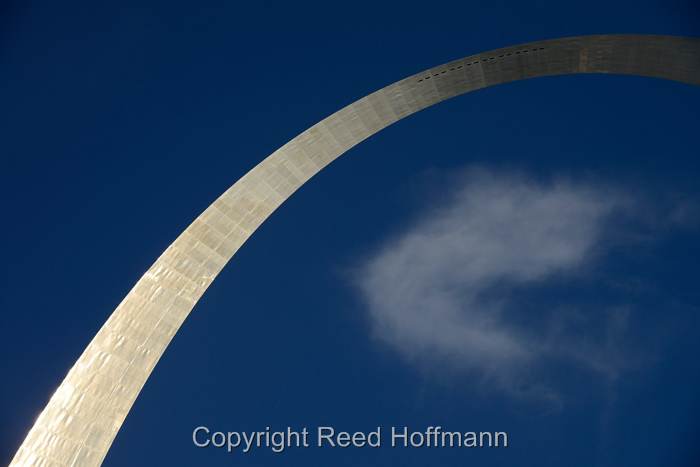One of the cardinal rules of photography is to always have a camera with you. That’s obvious – without a camera, you’re not going to make any pictures. But I think there’s an even more important rule for when you have that camera – be ready for the unexpected. It’s too easy to get tunnel vision in photography. We get one picture in mind, and become oblivious to the other things going on around us.
Recently I began a personal project to shoot the iconic scenes around Kansas City. I’ve lived here for nearly fourteen years, but most of my local photography has been assignment work. My opportunities to go out and make “pretty” pictures, which I really enjoy, have happened while I’ve been on the road teaching workshops. At home my responsibilities to my family – dogs, kids, house, food, etc. – usually trumped any ability to go and play. But things change.
Now that our kids are out of the house I’ve got more free time to get out and shoot (sorry, dogs). So I decided to make a list of the classic places around Kansas City and work at making beautiful photos of them. I’m lucky to have a number of good friends who are photographers here, and started by asking them for their favorite places/locations. Then I carved some time out of my schedule to start visiting those spots at the right time of day (usually the last couple of hours of daylight). And here’s where I finally get to the point of this story. So far I’ve been able to make some very nice photos of these places, but I’m finding that my favorite pictures from these outings often aren’t those. They’re the other stuff I’ve found while there.
During my years as a newspaper photographer, I always enjoyed the fact that part of my job was to drive around looking for interesting pictures. Working all hours of the day and all seasons of the year, I learned those cities inside out, and had the pleasure of seeing those places in all different types of light. I had assignments to shoot, but it was often the other pictures – those found while going to and from the assignments – that I liked best. And that’s happening again.
On my first outing I was shooting some pictures in “the Bottoms,” an industrial area near the Missouri River. I stopped by Kemper Arena to shoot it, and leaving, noticed “Bull Mountain,” steel cutouts of bulls on a hill near the highway. They’re normally shot from a distance because who would want to fight their way up that hill covered in head-high grasses. Well, that would be me.
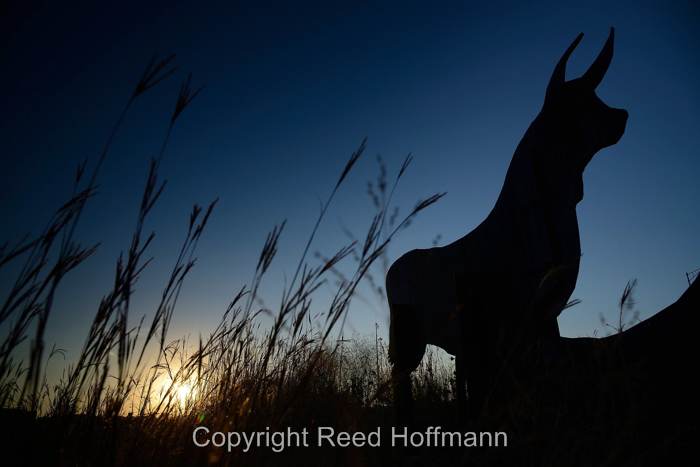
“Bull Mountain,” shot from a low angle to make the sculpture dominant against the sky and partially block the setting sun in the grasses. Nikon D800, ISO 100, 1/320 at f/7.1, exposure compensation at -1.0, 24-120mm f/4 lens at 24mm. Photo Copyright Reed Hoffmann.
Two days later I went to “The Nelson,” Kansas City’s famous art museum. It has an immense lawn on one side with a couple of giant shuttlecocks on it (don’t ask, but if you’re curious, look it up). That’s the classic shot, the long view with one of those monstrous toys in the foreground. And I shot that. But the picture I liked best was shooting through one, showing just part of it, framing the columns of the building.
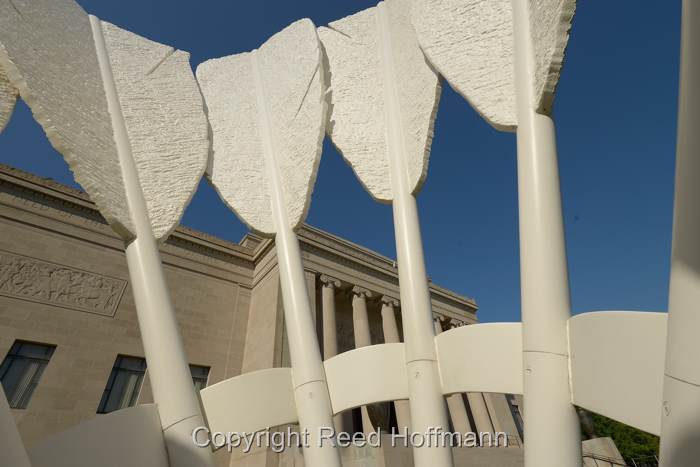
Shooting through one of the shuttlecocks at the Nelson. Nikon D800, ISO 100, shutter speed 1/400 at f/11, with exposure compensation at -0.7, 16-35mm f/ 4 lens at 16mm. Photo Copyright Reed Hoffmann.
From there I went to one of the few places where you can show the city with the mighty Missouri river in front of it. While waiting for the light to get better, I watched people launch their boats for an evening of fishing. That made some nice pictures, but the best was of one man was using a net to catch bait fish. I walked over and asked if he’d mind if I shot some photos. We chatted while I crouched under him as he flung his net. The night shots of the city turned out well too, but this was different.
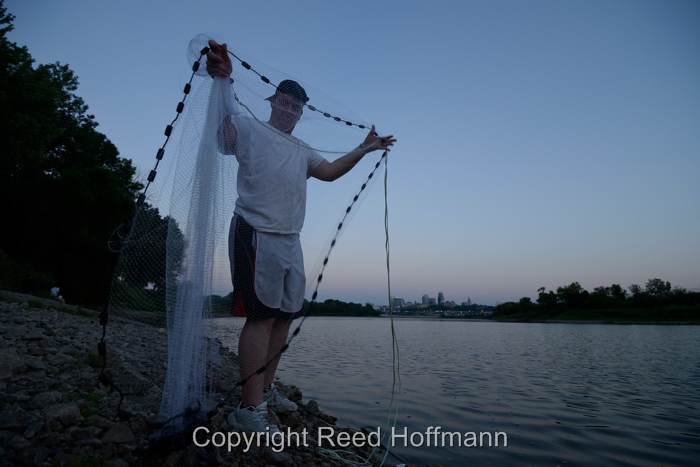
Fisherman on the bank of the Missouri. Nikon D800, ISO 250, shutter speed of 1/100 at f/4.5, with exposure compensation at -1.0, 16-35mm f/4 lens at 16mm. Photo copyright Reed Hoffmann.
A few days later I was leading a workshop in Kansas City, and at the end took my group to the Liberty Memorial. There’s a classic shot to be made there, of Union Station in the foreground and the city behind (it’s my cover photo at www.Facebook.com/KCphotographer right now). As the group was setting up their tripods and getting ready, I looked around for what else there might be. Some kids were running around the base of the memorial, and I shot them against the light and shadows created by the recessed floodlights. Then I noticed a crescent moon in the western sky. It was beautiful by itself, but to make something special there needed to be more. I found that in a couple who were sitting on the wall. As I walked over to talk to them, they got up to leave. Telling them they made a beautiful silhouette against the sunset, I asked if they’d mind standing there for a few minutes while I shot some photos. They said sure. Afterwards I gave them my card, and told them to email me and I’d send them the photo. When people help me, I like to pay them back.
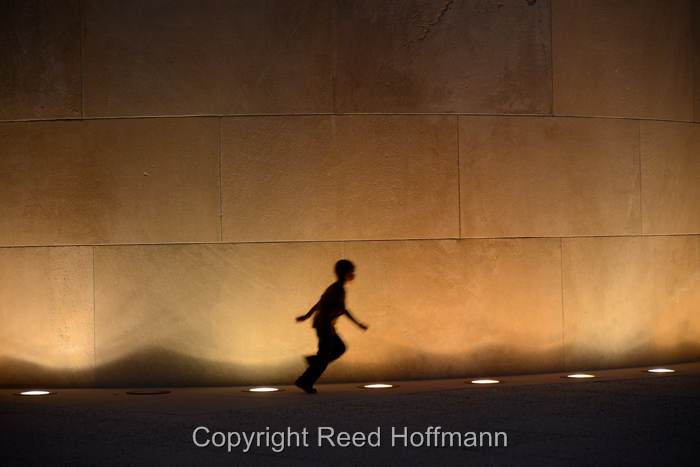
I liked the graphic qualities of light and shadow as kids ran around the base of the memorial. Nikon D800, ISO 640, shutter speed of 1/60 at f/4.5, with exposure compensation at -1.0, 24-120mm f/4 lens at 105mm. Photo Copyright Reed Hoffmann.
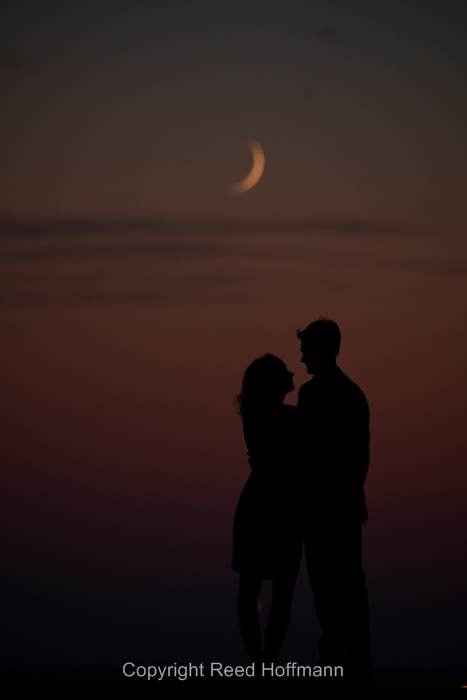
This nice sunset and crescent moon just needed something extra, which this couple provided. Nikon D800, ISO 640, shutter speed of 1/10 at f/5.6, 80-400mm f/4.5-5.6 lens at 330mm. Photo copyright Reed Hoffmann.
The last part of this story happened a few days ago, as I drove to Indiana to visit my mom. Every time I do this trip I pass through St. Louis, but have never stopped to shoot pictures. Thinking I’d like to teach a workshop there next year, this time instead of driving straight through, I pulled off the highway and stopped at the Arch to do some scouting. There were a few horses there to pull carriages, and one was nicely attired. I asked the driver if he’d mind if I took some photos, and he said no problem. So I decided to make the Arch my frame, putting the horse in it.
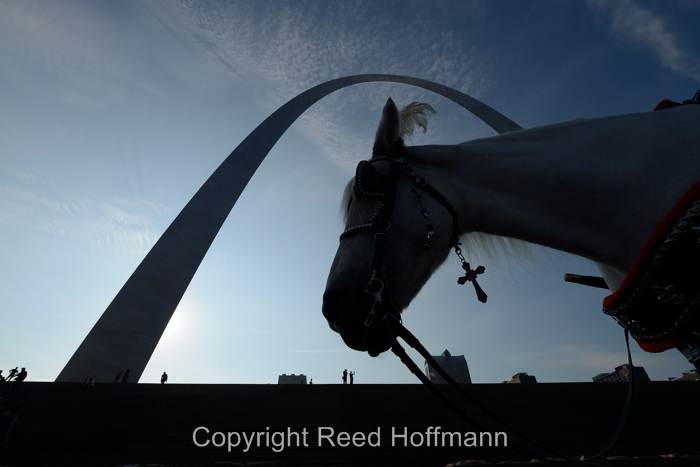
I had to lie down on the road to get a low enough angle to silhouette this horse against the Arch. Nikon D800, ISO 100, shutter speed of 1/500 at f/11, with exposure compensation at -0.7, 16-35mm lens at 16mm. Photo copyright Reed Hoffmann.
And then while walking around, playing with the lines and angles of the Arch, I looked west and saw a great sunset forming. As with the moon, a sunset needs something more. In this case I walked a couple of blocks west where I could frame the clouds and rays of light with the dome of a building.
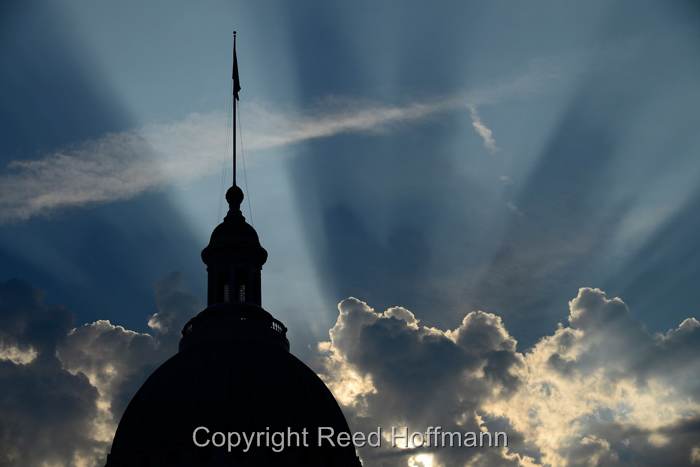
Nikon D800 ISO 100, shutter speed of 1/1250 at f/8, with exposure compensation at -1.0, 24-120mm f/4 lens at 82mm. Photo copyright Reed Hoffmann.
In all of these cases, the subject I planned to shoot either wasn’t the subject of the resulting photo, or became a background element. Which brings me back to the point of this story. It’s great to have a plan when you go out to shoot. But don’t be so tightly focused on what you want to shoot that you forget to be open to what else is there. Always be looking around, thinking, “what else might make a picture?” If you’re lucky, those photos may be better than what you were originally there to take pictures of.

